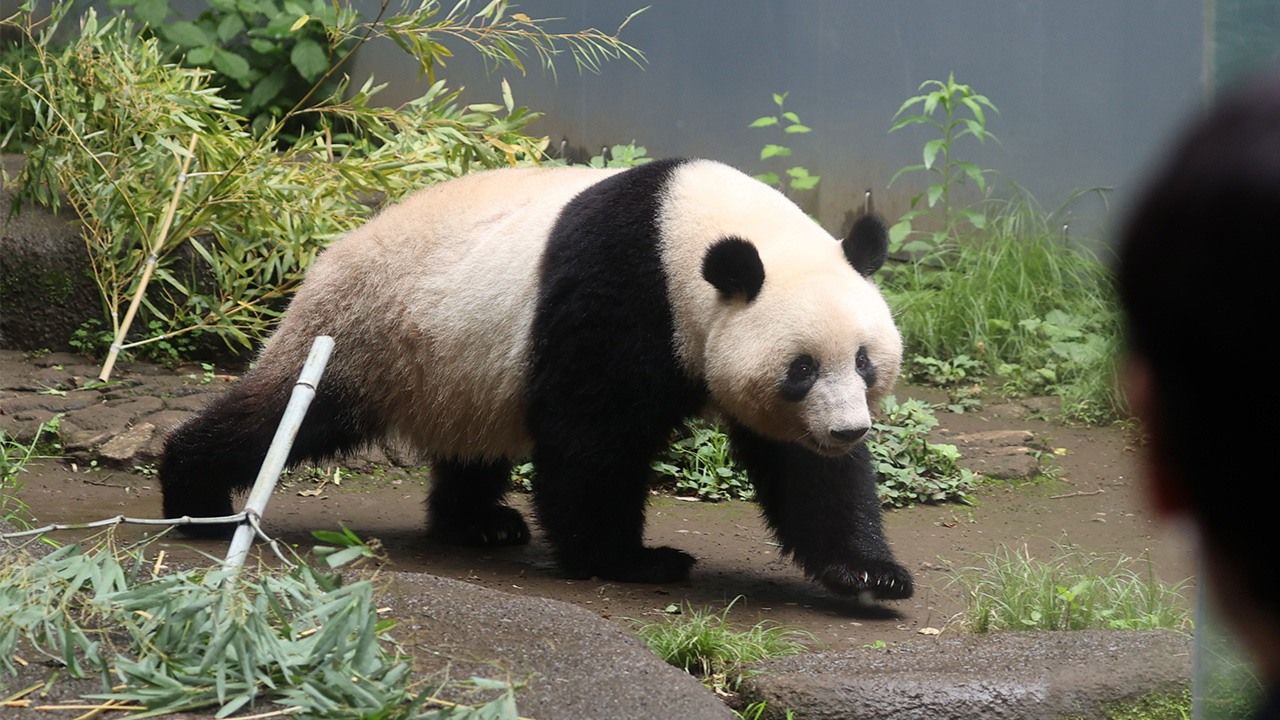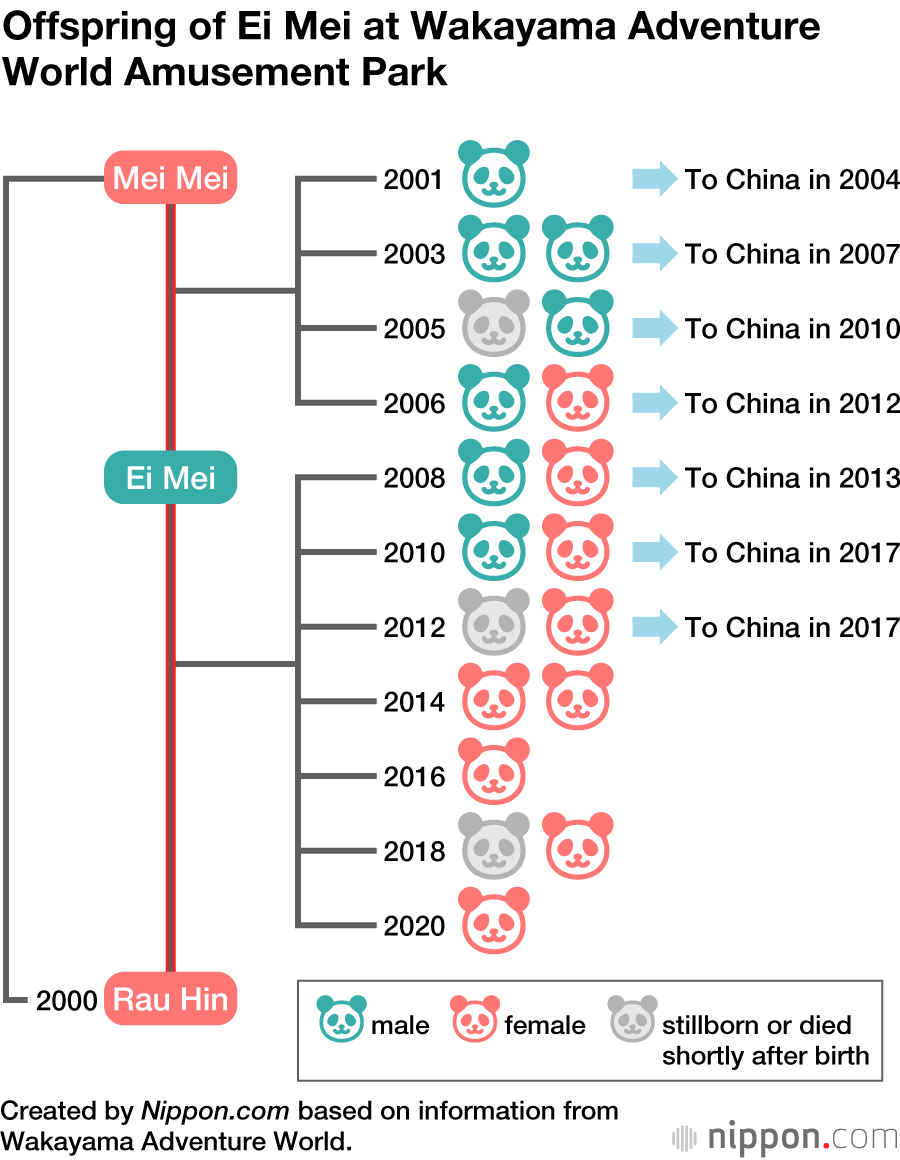
Pandas in Japan: Returns to China and a Father 16 Times
Society- English
- 日本語
- 简体字
- 繁體字
- Français
- Español
- العربية
- Русский
Even Pandas Born in Japan Are Returned to China
Ueno Zoo received its first pandas in October 1972, commemorating the normalization of diplomatic ties between Japan and China. The arrival of the male Kang Kang and the female Lan Lan sparked an unprecedented “panda boom” in Japan. After their deaths, the female Huan Huan and male Fei Fei arrived in the early 1980s, followed by the birth of the female Tong Tong in 1986 and the male You You in 1988.
The male Ling Ling arrived in Tokyo in 1992. He traveled three time to a zoo in Mexico that was taking part in a joint fertility project, and his mating partner Shuan Shuan also was loaned to Ueno Zoo, but he died in 2008 without leaving any offspring. For three years thereafter, Ueno Zoo had no panda, until the arrival from China of the male Ri Ri and female Shin Shin in 2011.
A female cub named Xiang Xiang was born to the couple in 2017, sparking a new panda boom at Ueno Zoo. However, since international trading of pandas is forbidden, all pandas are considered as on loan from China. According to the agreement between the two countries, any panda born in Japan has to return to China within 24 months of the birth. Although permission was granted for Xiang Xiang to stay longer than the initial return date of June 2019, she will have to depart for China by the end of May 2021. A plan to have her go back at the end of 2020 was postponed due to the COVID-19 pandemic.
Big Daddy in the World of Pandas
The panda breeding program at Adventure World located in Shirahama, Wakayama Prefecture, has been highly effective. The male Ei Mei, born in 1992, has successfully bred with a mate at a pace of around once every two years since 2001. He initially arrived in Japan at the age of two. In 2020, he became a father for the sixteenth time, when his mate gave birth to a female cub on November 22. (Among those offspring, 11 have been sent to China.)
The first partner of Ei Mei did not give birth to any offspring. The female panda Mei Mei that arrived at Adventure World in 2000, after receiving artificial insemination in China, gave birth to the female Rau Hin that same year. Thereafter, Mei Mei was impregnated by Ei Mei four times, giving birth to six cubs.
Ei Mei also had cubs with Mei Mei’s daughter Rau Hin (with whom he had no blood tie). The period during which a panda can conceive only lasts around two weeks, at some time between March and May, and on top of this, the period during which a female can actually be impregnated is just a few days. These factors make it extremely difficult for a female to naturally conceive. Along with the high breeding capability of Ei Mei and the affinity between the breeding partners, another reason for the success seems to be the amenable living conditions, including a large area for exercise. Incidentally, Ei Mei is now 28 years old, which in human years makes him a senior citizen of around 80. The birth of his latest cub makes him the oldest male panda to breed on record.

Rau Hin, the mother of a large family at Wakayama Adventure World, with twin cubs in May 2015. (© Jiji.)
Return Marks the End of Post-Disaster Support
At the Kobe Ōji Zoo, a pair of pandas Kou Kou (male) and Tan Tan (female) arrived in July 2000, sent from China as a way to support the city’s recovery after the Great Hanshin-Awaji Earthquake. When it was found that Kou Kou was unable to breed, he was sent back to China, and a second male panda of the same name arrived in his place. Tan Tan gave birth twice, but one cub was stillborn and the other died soon after being born, so that she did not leave any offspring.
The initial agreement had been for the pandas to remain in Kobe until 2010, but after the death of the second Kou Kou that year, it was decided Tan Tan could stay longer. Recently the decision was made on the Chinese side to bring her back to China on the grounds that it would be best for her to spend her remaining years in a fulfilling natural environment, but the date of departure is not yet fixed.
(Translated from Japanese. Banner photo: Chances to see Xiang Xiang have been limited because Ueno Zoo was closed for four months from February to June due to the COVID-19 pandemic. © Jiji.)
